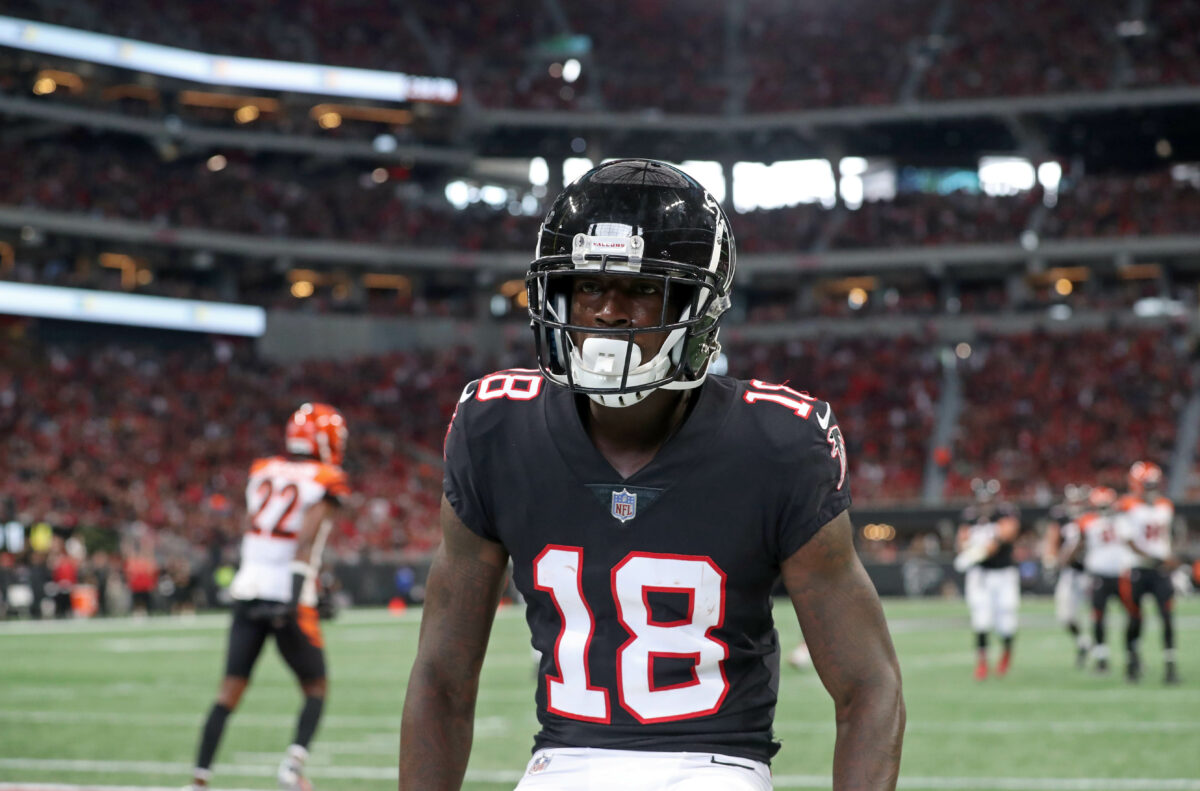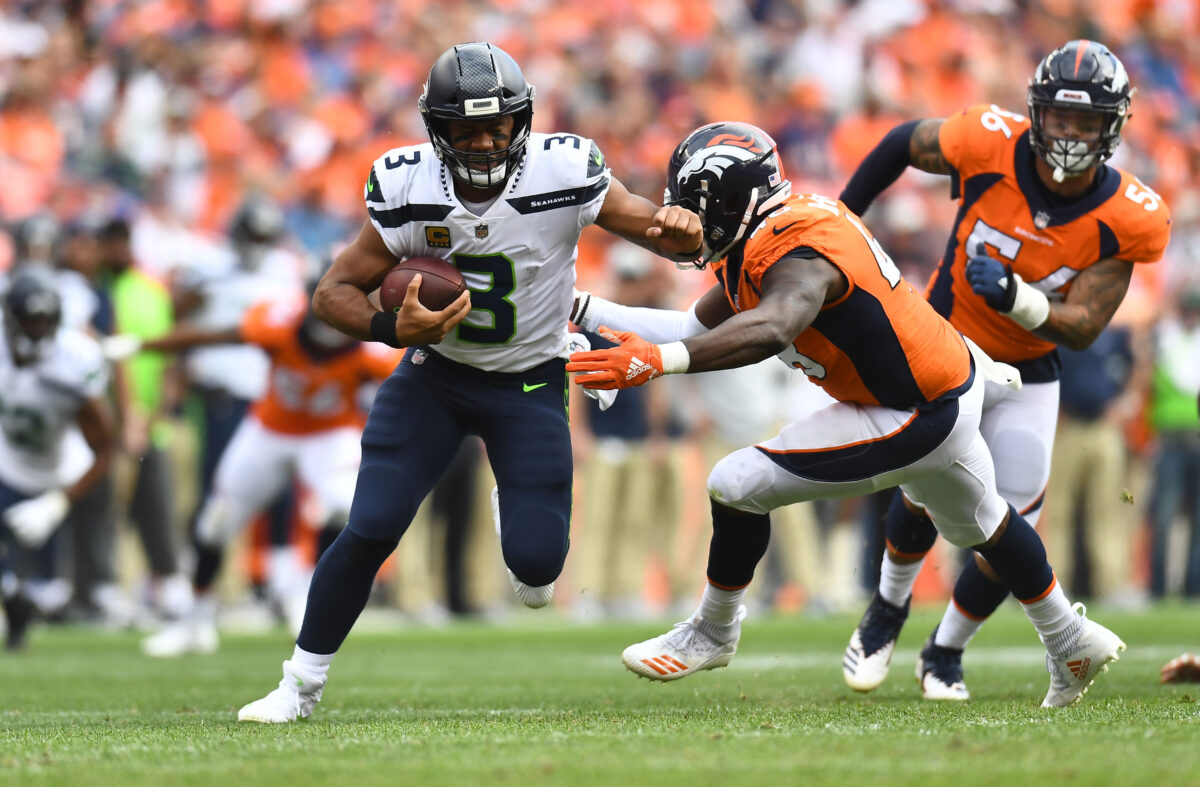Who got the better end of the Russell Wilson trade?
The Denver Broncos allowed Aaron Rodgers to have the offseason spotlight for all of two hours.
That was how much time passed between Rodgers’ reported contract extension with the Green Bay Packers and the breaking news that Denver, in search of a franchise quarterback since Peyton Manning’s retirement, had landed Russell Wilson from the Seattle Seahawks via trade.
It’s a big swing from second-year general manager George Paton, but a necessary one. The Broncos haven’t been back to the postseason since winning Super Bowl 50 in Manning’s finale. Denver was stuck in a five to seven-win loop the past five seasons, leaving it locked out of the playoffs but not quite bad enough to draft a can’t-miss quarterback. With a mediocre crop of QB prospects looming in 2022, Paton shot his shot and sent the Seahawks into rebuilding mode.
Let’s take a look at the pieces involved in the deal and figure out who got the better end.
Denver Broncos receive: QB Russell Wilson, fourth round pick.
Seattle Seahawks receive: TE Noah Fant, DT Shelby Harris, QB Drew Lock (lol), two first round picks, two second round picks, and a fifth round pick.
Broncos grade: A-
Denver has the pieces to contend. The core of Courtland Sutton, Jerry Jeudy, and KJ Hamler gives Wilson a deeper, but less proven, wide receiver stable than he had in Seattle. The presence of Albert Okwuegbunam, who is a top tier athlete and played well in stretches last year, represents an upgrade at tight end. Javonte Williams looks like a legit RB1 and the Broncos’ offensive line, while imperfect, allowed a lower sack rate than the Seahawks in 2021 (6.88 percent to 8.5).
Throw Russell Wilson, fully cleared to whip up whatever recipes he sees fit, into that mix and hooooo buddy, that offense is fun as hell.
The Broncos believe deeply in their defense as well. Losing Harris hurts, but there are plenty of stars lined up behind him. They range from young and awesome (Patrick Surtain II) to established and great (Justin Simmons). That unit underperformed in 2021, falling from 13th to 20th in overall DVOA, but has the potential to be something greater, even without draft reinforcements this spring.
Denver will owe Wilson $24 million this season if it doesn’t immediately sign him to a contract extension (which seems likely). This deal leaves Paton with roughly $24m in salary cap space for the upcoming season, per Over the Cap. He can use that to upgrade his offensive line, add some secondary depth, or punch up his pass rush by reuniting with an old friend.
The Broncos made a massive upgrade to the most important position in the game. It cost them a ton, but they aren’t done making improvements yet. Wilson is the first domino to fall — and a few more tweaks could turn Denver from playoff team to unavoidable Super Bowl 57 contender.
Seahawks grade: C
It’s impossible to separate this deal from a misstep that preceded it. Seattle’s crown jewel in this trade is the ninth overall pick. That will be used to replace the 10th overall pick, which the Seahawks shipped to the New York Jets in order to acquire Jamal Adams in 2020. That Adams-led passing defense ranked 26th in passing defense DVOA in 2021.
Dealing Wilson wasn’t solely a reflection on that swap, but when a trade’s through-line indirectly results in shipping out the greatest quarterback in franchise history it’s going to be a bitter pill to swallow. The Seahawks didn’t see a road to contention as currently built or a road to rebuilding without acquiring high profile draft picks. Without this move, they were the 2017-21 Broncos, slowly dying in stasis.
So they blew it up, and while it starts with Wilson it probably won’t end there. Seattle badly needs a quarterback and Drew Lock almost certainly doesn’t fit that bill. The Seahawks have to find a Wilson replacement sooner or later; the timing may depend on how they feel about this year’s rookie QB crop and whether Pete Carroll, who will turn 71 years old this season, is okay with a hopeless season that only serves to set up 2023.
Harris is a nice piece but will be 31 this season and releasing him before the ’23 season will shave $9 million off the team’s salary cap. Fant is a former first round pick who is better than any other tight end currently on the roster but still hasn’t had more than 673 receiving yards in any of his three seasons in the league and could be a free agent after 2022 if Seattle fails to exercise the fifth-year option on his rookie contract (unlikely, but possible).
These guys are fine! They’re starting caliber football players! But they may not play a role in Seattle’s rebuild.
Instead, this trade is all about draft picks and signaling to the rest of the NFL they’re in the market for more. The Seahawks would love to execute an Eagles-style rebuild in which they stockpile first round picks while remaining in playoff contention. That latter part will be difficult in the NFC West, but the former is viable. Seattle can offer veteran playmakers like Bobby Wagner, Carlos Dunlap, and Tyler Lockett if it’s willing to scuttle 2022 and fully commit to a rebuild. It’s unlikely any would bring back a first round pick in exchange, but there are plenty of useful veterans who would fetch draft assets in a fire sale.
Trading Wilson signifies the start of a new era for Seattle. Receiving four first/second round picks in the process is a great way to begin a rebuild. Now Carroll and general manager John Schneider have to dive into the crevasse in order to bottom out and find the talent to contend again.
There’s no guarantee they’ll come out the other side in any better shape; especially with a weak crop of quarterbacks in this year’s draft and a current depth chart topped by Drew Lock and Jacob Eason.
[mm-video type=video id=01fxnfrnv8mr6g9g7189 playlist_id=none player_id=none image=https://images2.minutemediacdn.com/image/upload/video/thumbnail/mmplus/01fxnfrnv8mr6g9g7189/01fxnfrnv8mr6g9g7189-0a37406a2d9b5125aafb3458071d1b87.jpg]
[listicle id=1856460]



